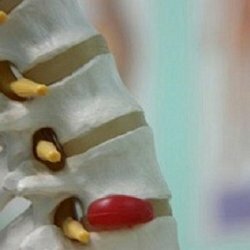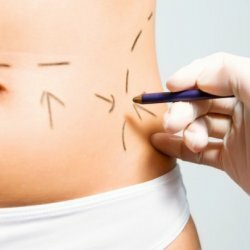Corn on the legs: treatment at home
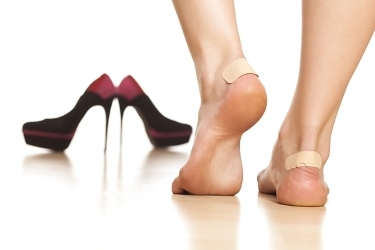
Calluses are a problem old as the world.A huge number of people are looking for a way to get rid of annoying outgrowths.Corn on the feet not only hinder walking, pain, but also a purely aesthetic disadvantage, which is especially worrisome for women.To quickly cure them, you need to understand the causes of corns.
Contents:Why do corns appear?
In fact, corn is a banal defensive reaction of the body to the impact of an external factor such as friction.Local sealing of the skin on the hands is formed during prolonged heavy work without the use of protective gloves.Corns in different parts of the palms are characteristic, for example, for some athletes, hairdressers, seamstresses, etc.
The main reason for the appearance of calluses on the feet is usually the wearing of an uncomfortable tight shoe.
For immediate reasons, include:
-
 shoes made of a poor-quality hard material, rubbing the delicate skin;
shoes made of a poor-quality hard material, rubbing the delicate skin; - presence in shoes or boots of very rough untreated internal seams;
- narrow shoes made by an unsuccessful "shoe" and excessively squeezing the feet;
- the shoes, shoes or sports shoes have too thin soles( the area of lifting of the foot suffers);
- the need for a woman to often walk in shoes with a "stud" or high-heeled boots.
Obesity and overweight is one of the factors that increase the likelihood of the formation of calluses on the legs.
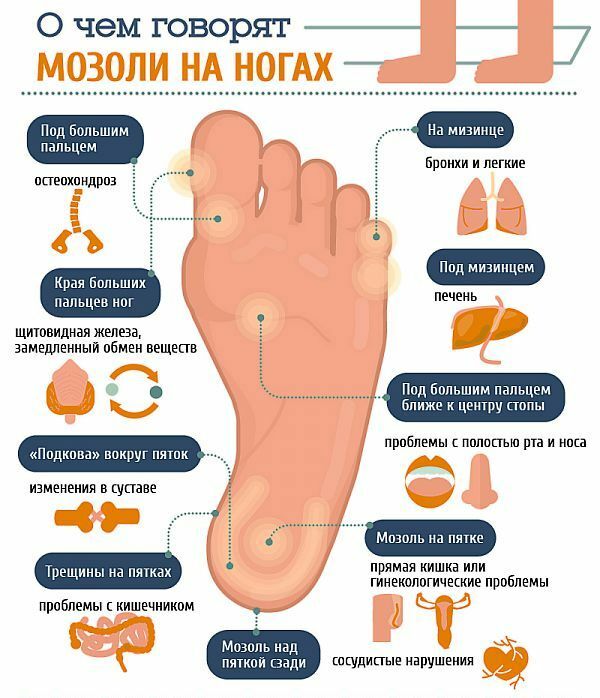
Appearance of skin growths is often noted with regular walking barefoot on stony ground.At first, the soles are injured, but then, as far as adaptation, they form coarse calluses.
Important: must be carefully examined for single small calluses.Under them, warts are often masked.In such cases, ordinary folk remedies are completely ineffective;To get rid of the wart, you need to go to a dermatologist.
Corn varieties
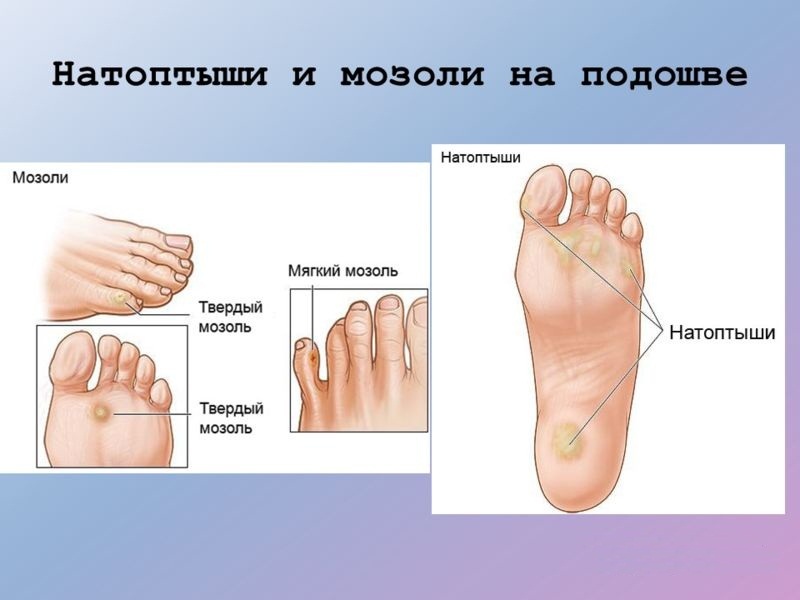
There are several types of calluses, which are actually stages of a single process.A new kind of education is formed on the site of the previous one.
Types( stages) of corns:
- wet( water);
- bloody;
- is dry;
- is dry with a formed stem.
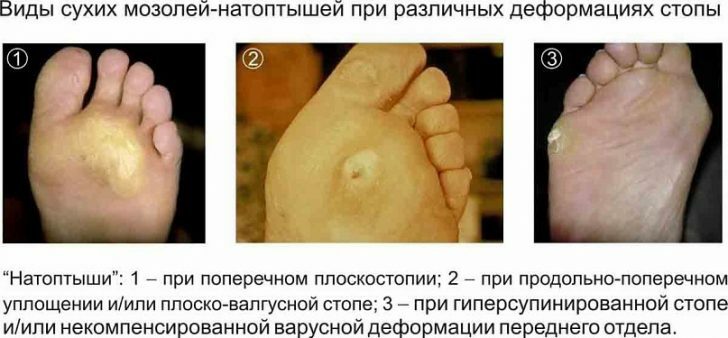
Note : the first three types of calluses are familiar to everyone, of course.Dry calluses on the legs with a root are less common, but they are most difficult to treat.It is not possible to get rid of them at home.
The first sign that the skin can form a wet callus is hyperemia and swelling.If the rubbing of this area continues, a whitish bubble with a liquid inside is formed.The appearance of wet calluses on the legs is due to the accumulation of the lymph fluid under the outer exfoliated layer of the epidermis.As a result, a "classical" blister is formed.A problem of this kind is encountered by everyone who wears new soft shoes.
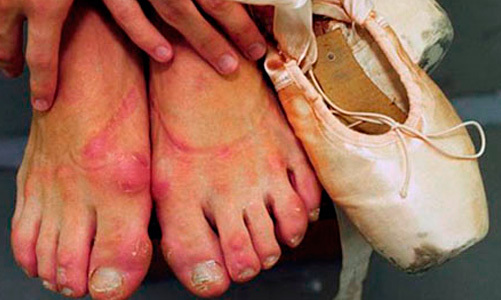 The mechanism of the formation of corns is similar.The difference is that in the case of friction, a small blood vessel is additionally damaged, as a result of which the contents of the blister acquire a characteristic crimson hue.
The mechanism of the formation of corns is similar.The difference is that in the case of friction, a small blood vessel is additionally damaged, as a result of which the contents of the blister acquire a characteristic crimson hue.
Important: the most frequent complication, formed with self-healing of calluses, becomes infection of the wound, aggravating inflammation.It is necessary to strictly follow the rules of asepsis and antiseptics, that is, carefully disinfect a blister that has been accidentally opened.
In some cases, when the infection is attached, the contents of the bladder can become purulent.Such calluses are an unconditional reason for contacting a surgeon.
If timely not to take adequate measures, then the place of water callus gradually forms dry.Violation of the integrity of the thin outer layer of the epidermis, and the fluid often leaves the blister.Peel dries to the wound, and in this zone with the passage of time, new horny layers build up.
In untreated dry callus, a root can penetrate into deeper layers of skin with time.This type of corn is the most painful, since the rod is able to press on the nerve endings even with minimal load on the foot.The root can not be extracted by improvised means;Attempts to remove it lead only to the formation of deep wounds.In this case, you will need specialist intervention.
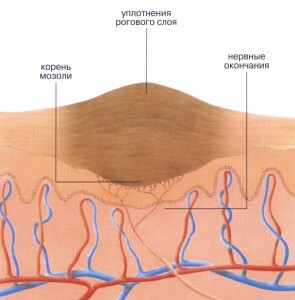
Important: The formation of the root from dead cells is a fundamental difference between dry callus on the legs and from the corpuscle.Visually, these calluses have a funnel shape.
Treatment of callus on the legs
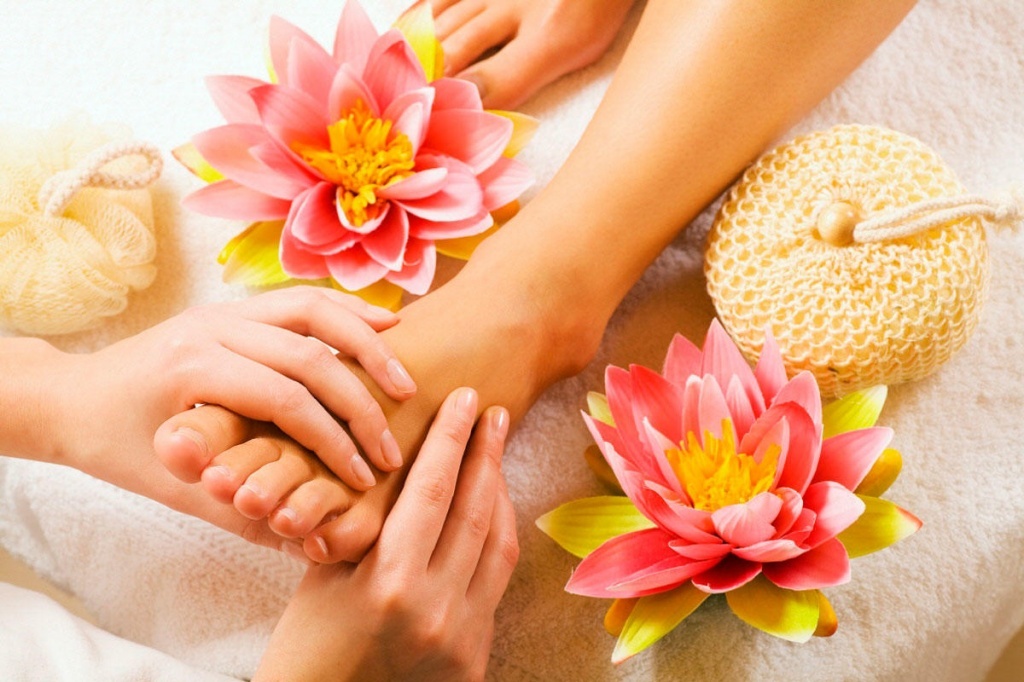 Treatment of calluses of all varieties should begin with the elimination of the etiologic factor.Stop wearing tight shoes, make sure that your feet are dry, and your socks are not going to fold.Be sure to purchase socks without seams.
Treatment of calluses of all varieties should begin with the elimination of the etiologic factor.Stop wearing tight shoes, make sure that your feet are dry, and your socks are not going to fold.Be sure to purchase socks without seams.
Before starting to treat corn, it is advisable to consult a pharmacist.Not all the drugs that are sold at the pharmacy are really effective.
Medications for calluses on the legs
When buying external skin care products in problem areas, preference should be given to preparations( ointments, plasters and creams) based on benzoic or salicylic acid.The best option is the presence of both active ingredients.Combined action of these acids allows you to get rid of calluses and inflammation around it as soon as possible.Salicylates additionally contribute to the drying of corns.From the dry calluses on the legs, a softening ointment, the main component of which is urea, is helpful.
Among the most effective pharmacological agents against callosities are:
- Salipod( patch);
- Compide( plaster);
- Stop corn( extract based on celandine extract)
- Super Antimosolin( cream);Bisallitin( salicylic acid ointment).
- .
Important: it is recommended to steam up your feet in a saline bath and wipe it dry before applying these products!
If conservative measures do not bring the desired result, then you need to seek medical help as soon as possible.With dry coronals on the legs, there is no other way out.
Wet and spotty calluses must be protected with a bactericidal plaster until the liquid inside the blister dissolves itself.It is unacceptable to puncture the blisters, but if the corn is opened, the wound and the area around it should be thoroughly treated with an antiseptic( 2% hydrogen peroxide solution, 70% alcohol or furacilin).Then you need to apply on the wound ointment or gel with a bactericidal effect and bandage with a sterile bandage( it is better to use an individual package purchased at a pharmacy).The bandage should be removed from time to time to ensure the flow of oxygen to the wound.
Assistance to a cosmetologist in the treatment of callus on the legs
Modern medicine has an impressive arsenal of tools that allow the patient to get rid of the annoyed callus quickly, painlessly and without visible post-operative scars.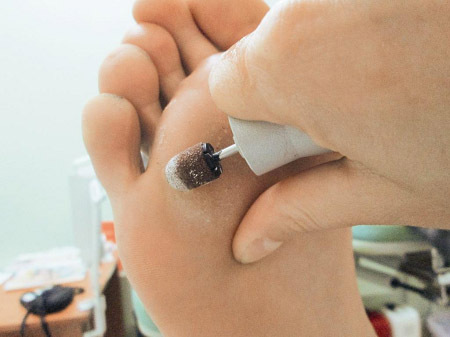
The basic physical methods of removal of calluses on the legs, used by cosmetologists:
- cryodestruction( freezing of pathologically altered epidermis with liquid nitrogen);
- laser therapy( the beam helps to burn even the rods of neglected dry calluses on the legs);
- diathermocoagulation( high frequency electric cauterization).
Note: Cosmetologists are also widely used for the treatment of corns keratolytic compositions( creams) and polishing of the horny areas of the skin of the legs.
Treatment of calluses with traditional medicine
Sometimes it is not possible to seek help from a cosmetologist.In this case, time-tested home remedies will come to the aid in the treatment of calluses on their feet.
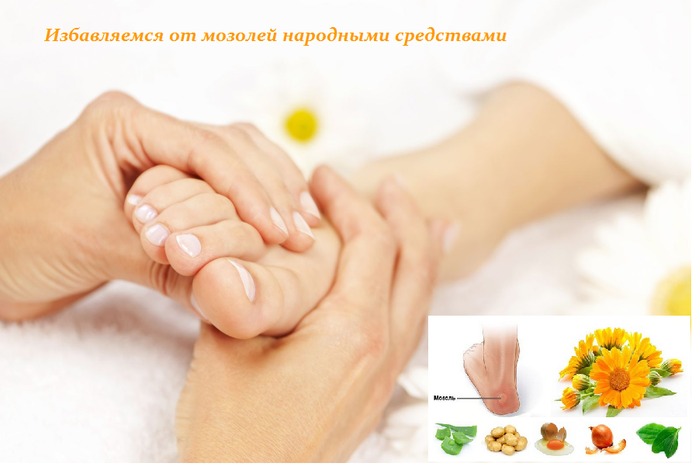
To get rid of calluses on your own, it is important to follow one rule: the treatment process must be permanent and systemic.Most of the funds require a fairly long-term use, and frequent drug changes will not lead to the expected therapeutic effect.
We offer you several proven folk remedies for the treatment of calluses on the legs:
- One of the simplest and most affordable folk remedies are compresses made from a regular bread crumb dipped in a solution of table vinegar.At night compress should be pribintovat to calluses.As a rule, the blister or accretion disappears after a few days.
- You can quickly achieve positive results with the help of oat trays.It is necessary to take oatmeal straw, pour water in the ratio of 1:10, cook for 15-20 minutes, then cool to a temperature that can be tolerated.In the resulting broth you need to immerse a sick arm or leg for 20-25 minutes.Baths should be done until the corns disappear completely.
- Make an incision on the stalk of the dandelion and squeeze out the milky juice.The plant helps if you use it in the flowering period.The juice should be applied to the corn before it dries.
- The usual lemon will help you to get rid of dry callus.Cut off the top so that a small piece of juicy pulp remains on the zest.In the evening, you need to steam the corn in clean hot water, tie a piece of lemon to it( pulp to the skin) with a normal bandage and leave it all night.The procedure must be continued until the dry build-up completely disappears.
Note : the most common vegetables that can be eaten at hand - garlic, onions and potatoes - can be used to treat calluses.
- Onions must be cut into small pieces.Attach them to the corn-stained corn and cover with a plastic wrap.Pribintuyte compress and leave for the night.In the morning, remove the bandage and try to carefully remove the softened layer of skin( for example, a small pumice stone), then rinse the problem area thoroughly with warm water.Sprinkle corn with talcum powder or baby powder.
- Finely chop 1 medium-sized tomato, and steamed gruel steamed about 5 minutes over low heat.Cool it and, applying on a clean napkin, attach to the corn, cover with a plastic wrap and bandage.The compress should be done 2 times a day for 2 hours.Corns in most cases disappear within two weeks.
- Peeled raw potatoes should be grated on a fine grater.The resulting gruel is applied to the keratinized skin area, cover with polyethylene or special compress paper and tightly bandage.Leave the compress for the night, and in the morning, cut the soft corn with a sharp tool, previously boiled and treated with an antiseptic.Then the place where the corn should be lubricated with baby cream.
- At night to dry callus, you can also pribintovyvat boiled figs or prunes, repeating the procedure to cleanse the skin from the growth.
- Dry painful corns help to eliminate propolis.It is better to steam out the problem area of the skin in the morning, then apply the mashed propolis to the keratinized area, fix it with adhesive tape.In the evening, take away the medicine and scrape off the softened skin with pumice stone.Repeat the procedure until you get rid of the corn.
- The garlic clove should be pre-baked( or heat-treated in a microwave oven).Then cut it along and pribintovat at night to the corn.In the morning remove the bandage, remove the softened skin, and lubricate the affected area with a fat cream.
Important: do not apply garlic to healthy areas of the skin to avoid the development of a chemical burn!
- Fresh garlic can also be rubbed, and the resulting mass squeeze juice.Rape the corn on your feet and oil it with garlic juice.The desired effect is achieved, usually after 10-15 procedures, which should be carried out daily.For the compress in the treatment can be used not only juice, but also the gruel from grated garlic.
- The resin of coniferous trees is recommended by folk healers as one of the best remedies for horny calluses on the legs.Make a hot foot bath, wipe dry your feet and apply a thick layer of resin on the calluses.Cover the problem areas with clean gauze or bandage and put warm socks over the compress.The duration of one procedure is 24 hours, after which the resin must be washed off thoroughly and the procedure repeated.The course of treatment of callus on the legs - 10 days.
- A thin film from the inner surface of the egg shell helps with fresh blisters.Place the film on the wet side on the bubble and cover with a bandage.Using this method allows you to get rid of a wet callus on your feet in just a couple of days!
Corrosion prevention
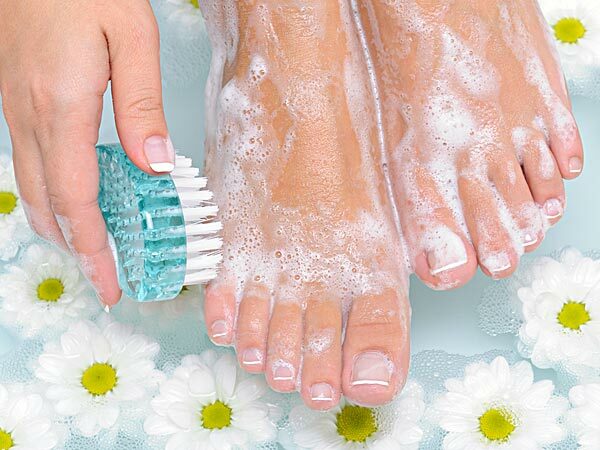
It's easier to prevent the formation of calluses than to fight them later.To prevent the formation of blisters and build-up on the skin of hands, you must wear protective gloves before work.In order not to have calluses on your feet, take a closer look at the choice of shoes.Picking up new shoes or shoes is preferable in the evening, as the foot by the evening becomes after walking a little more in volume.
Plisov Vladimir, medical reviewer

